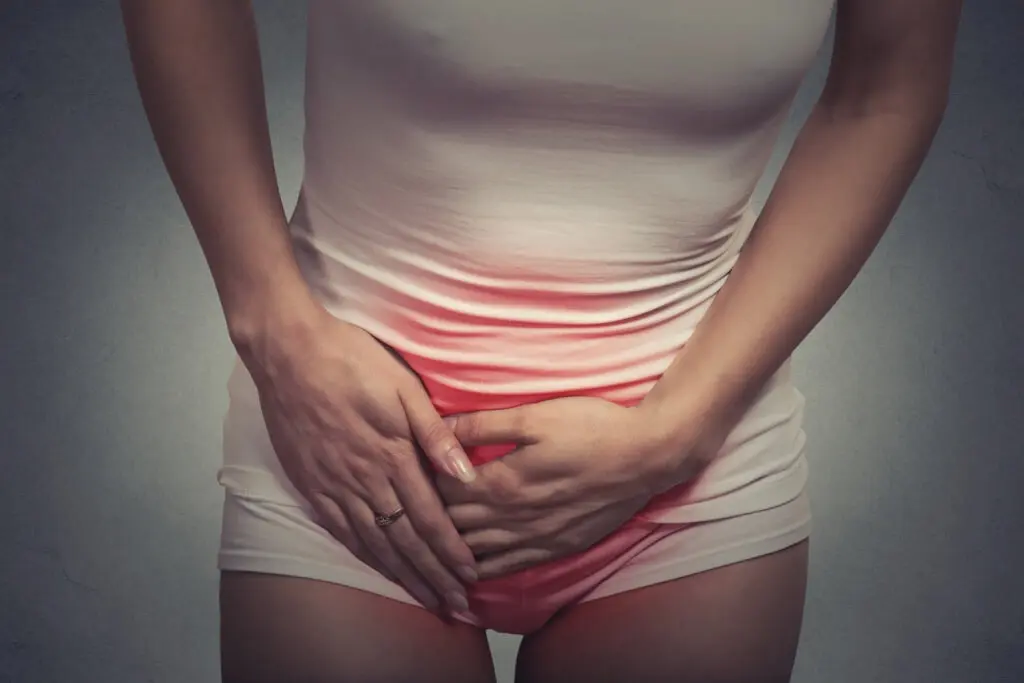Share This Article
Public bone pain after childbirth is quite common. This condition is also known as symphysis pubis diastasis or SPD and often causes discomfort due to annoying pain.
This condition is generally not dangerous for the baby, but can be very painful for the mother. So, to find out the causes and how to deal with pubic bone pain after giving birth, let’s look at the following explanation.
Causes of postpartum pubic bone pain
Reporting from Very Well Family, during pregnancy the relaxin hormone causes the pelvis, especially the pubic bone, to relax. In general, this can make birth easier for both mother and baby.
However, sometimes relaxin does its job very well, loosening the ligaments around the pelvic bones long before the baby is ready to come out. Because of this, some women feel pain in the hip joint.
Most of the pain is centered in the front in the pubic bone area, above the mons pubis or under the pubic hair. Additionally, you may also notice some swelling in the pubic bone area and experience a wobbly gait.
Apart from postpartum, the cause of pain in the pubic bone can be caused by several factors, namely:
1. Osteitis Pubis
One of the causes of penile bone pain is osteitis pubis. Osteitis pubis is inflammation that occurs in the penis bone. This inflammation can cause pain in the groin during pregnancy (lower thigh) to the stomach. If left untreated, osteitis pubis can progress to osteomyelitis.
Osteitis pubis most often occurs in people with active physical activity. Additionally, those who have had surgery or a pelvic injury are also at greater risk for this condition
2. Osteomyelitis
Osteomyelitis is a bone infection that can spread to other parts of the bone through nearby tissue or the bloodstream. Although rare, osteomyelitis is a serious condition that can cause additional complications.
3. Heid’s Pain
Pain in your pubic bone can also be caused by the process of ovulation, which is painful during menstruation. In this case, you may experience very severe pain during menstruation. This condition is called dysmenorrhea.
Because menstrual pain occurs in the lower abdomen, sometimes it makes the area around the pubic bone hurt as well.
During ovulation, the release of the egg along with fluid and blood from the ovaries can cause irritation . That’s why you experience menstrual cramps every month.
4. Urinary Tract Infection
Caused by bacterial infections in the urinary tract, which includes the urethra, bladder, ureters and kidneys. This infection often causes pain in the pelvic area and around the genital bones.
Not only pain, but also urinary tract infections can cause burning when urinating, bloody urine, and cloudy smelling urine. In kidney infections, pain can also radiate to the sides and back.
5. Sexually Transmitted Diseases
Sexually transmitted diseases can also be a serious cause of pain in the genitals or pelvis. Additionally, you may experience pain when urinating, bleeding even if you are not menstruating, and abnormal vaginal discharge.
Chlamydia and gonorrhea are the most common types of STDs that occur and cause discomfort in the pelvic area and genitals.
Is there a diagnosis for this condition?
Please note, X-ray examinations are not recommended during pregnancy. Therefore, usually the doctor will make a diagnosis through an ultrasound or ultrasound examination. An ultrasound examination can help see the space between the pelvic bones.
However, more generally doctors will make a diagnosis of pain in the pubic bone based on symptoms alone. If you have given birth and are still in pain then an X-ray in the form of a diagnostic test is the best option available.
How to deal with pubic bone pain after giving birth?
Even though postpartum pubic bone pain usually disappears, there are several treatments you can get. Treatments to reduce pain in the pubic bone include the following:
1. Use a pelvic support
To reduce postpartum pubic bone pain, try to stabilize the pelvis as much as you can through a birth strap. This binder can also help relieve back pain.
Research shows that flexible belts or straps work very well. This tool can also help prevent further injury due to an unstable pelvis.
2. Physical therapy or acupuncture
Before doing physical therapy or acupuncture to treat pain in the pubic bone, ask your doctor first. Acupuncture treatment may be able to help in the long term.
Even though it takes a lot of time, this therapy can be said to be worth it. Also ask a therapist or acupuncturist for advice about what you can do at home.
3. Avoid pain triggers
Pubic bone pain after childbirth can be reduced by avoiding situations that trigger pain. Some of the situations in question, such as sitting down to put on trousers or swinging both legs at the same time.
It’s best to avoid standing for long periods of time. If you have to stand, then wear appropriate shoes and try to move or shift from one foot to the other.
4. Consuming drugs
Sometimes, painkillers can help treat pelvic bone pain after giving birth. However, the use of these drugs should be done under the supervision of a doctor because some analgesics are contraindicated in pregnancy and breastfeeding.


